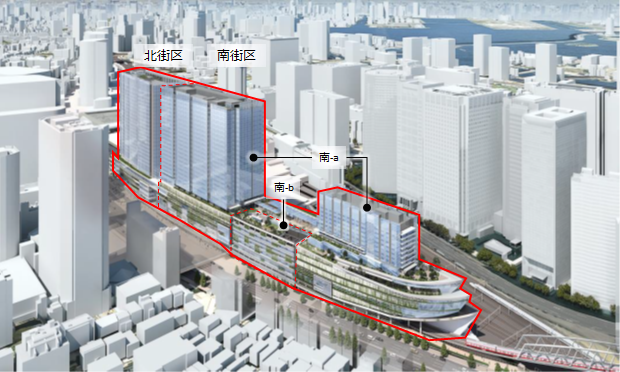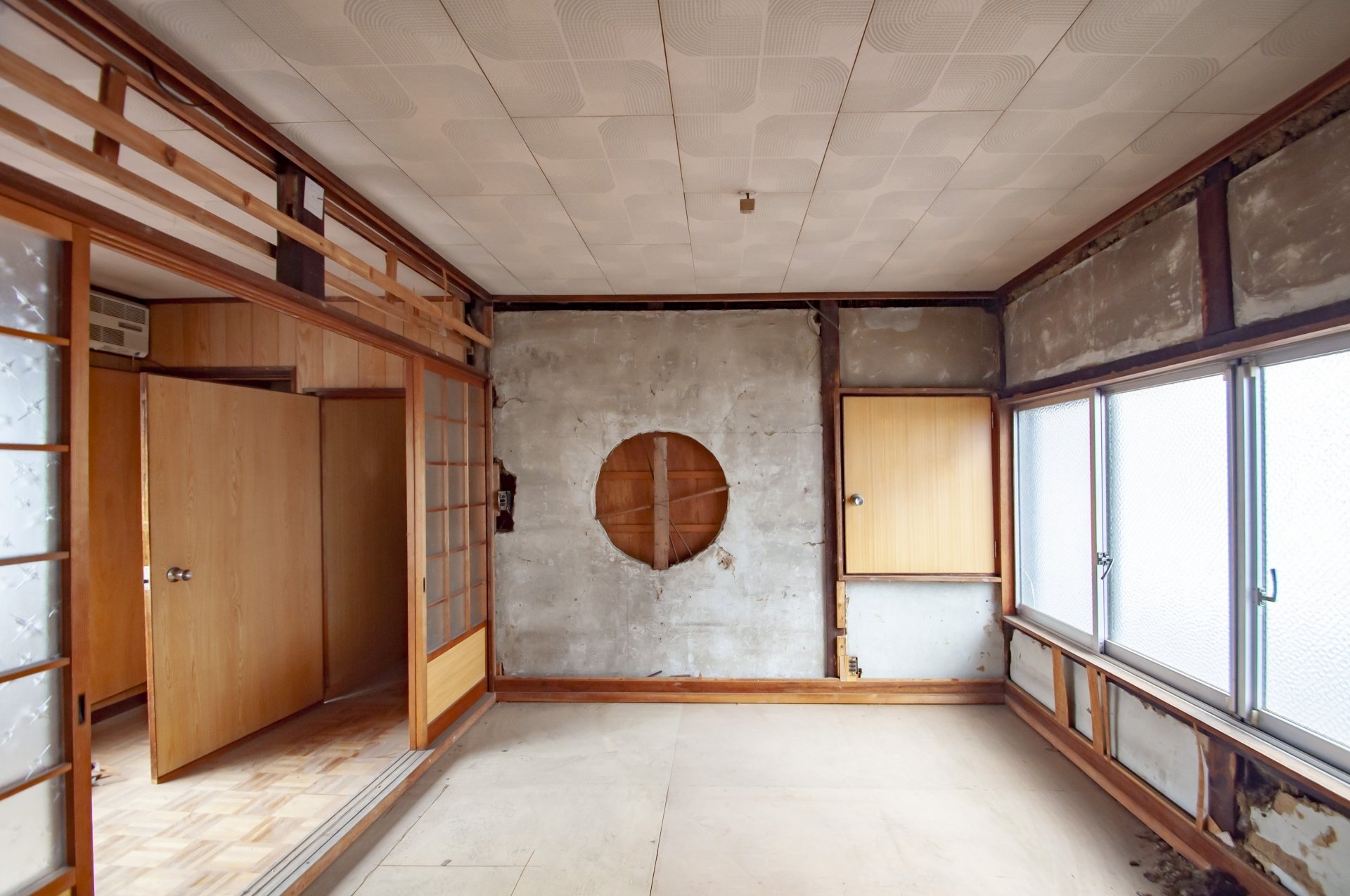Real estate investment is an important option for asset management among the wealthy. Among these, depreciation expenses are a key factor that significantly impacts cash flow and tax burdens in rental operations. A proper understanding and utilization of depreciation are essential for sustaining long-term asset growth.
What is depreciation expense and why is it important?
Depreciation expense refers to the cost of acquiring assets (depreciable assets) whose value decreases over time, such as buildings and equipment, which is allocated and expensed over their statutory useful life. Land in real estate does not lose value over time and is therefore not subject to depreciation, but buildings deteriorate over time, so their purchase costs are gradually expensed. This mechanism allows the significant expenses incurred in acquiring a building to be recognized as expenses over multiple years rather than all at once in the year of acquisition.
There are two main reasons why depreciation expense is important. First, depreciation expense is an expense that does not involve cash outflows, thereby reducing annual real estate income (profit after deducting expenses from rental income). For example, deducting depreciation expenses as expenses from rental income reduces taxable income by that amount, thereby reducing the burden of income tax and resident tax. Second, by accounting for the decrease in the value of the building through depreciation expenses, the book value of the asset is appropriately reflected in both accounting and tax purposes. Properly depreciating assets helps maintain the reliability of financial statements and supports long-term asset management.
For wealthy investors, the use of depreciation expenses is particularly important as an element of real estate investment. This is because high-income earners face higher tax rates (the combined income tax and resident tax rate can reach up to 55%), making the income compression effect of depreciation more significant. Additionally, knowledge of depreciation is essential for developing long-term business plans that account for the gradual decline in asset value over time.
Legal and tax treatment of depreciation
Under Japanese tax law, depreciation is classified as a “statutory necessary expense.” In cases where there is rental income from real estate, the building must generally be depreciated annually as an expense. It is not permitted to expense the entire amount in the year of acquisition; instead, depreciation expense is allocated annually over the legally prescribed useful life of the asset. Depreciation expenses are recognized as necessary expenses for real estate income or business income under the Income Tax Act, and properly recording them can reduce taxable income from rental operations.
Under the provisions of the Corporate Tax Act and the Income Tax Act, the methods of depreciation and useful life are specified in detail. The statutory useful life is prescribed by ordinance based on the type and structure of the asset, and for example, building fixtures (such as elevators) and structures (such as fences or paving) each have their own useful life. Additionally, under tax law, two methods of depreciation—the straight-line method and the declining-balance method—have been recognized. For individual real estate income, the statutory method (principally the straight-line method) is applied unless otherwise reported.
Due to past tax reforms, the depreciation method for buildings is now limited to the straight-line method. Specifically, buildings acquired after 1998 are not eligible for the declining-balance method, and for building fixtures and structures acquired after 2016, the declining-balance method has been abolished, and the straight-line method is now uniformly applied. Therefore, depreciation for rental buildings is now calculated using the straight-line method, where the same amount is expensed annually. While this legal clarification has simplified the process of recording depreciation expenses, it is important to note that the method allowing for significant depreciation in the early stages of investment (the declining balance method) is no longer available.
For tax purposes, depreciation expenses have the effect of generating a loss in real estate income, which can be offset against other income through income averaging. If a loss in real estate income is incurred through proper blue-form tax filing, that loss can be deducted from other income such as salary income. This income averaging benefit is particularly significant for high-income individuals, and tax-saving schemes utilizing depreciation have become widely known. However, caution is required regarding tax reforms. For example, the 2020 tax reform restricted the offsetting of depreciation losses from overseas real estate, among other measures, to curb excessive tax avoidance strategies. While depreciation is a recognized system under tax law, it is important to utilize it honestly within its prescribed scope.
Differences in depreciation methods based on building structure and statutory useful life (straight-line method and declining-balance method)
When discussing depreciation, the statutory useful life and depreciation methods (straight-line method and declining balance method) are important keywords. The statutory useful life refers to the number of years during which an asset is deemed to have economic value for tax purposes, and varies depending on the structure and use of the building. For example, the useful life of main residential buildings is specified as follows:
- Wooden residential buildings (including light-frame steel structures): 22 years (wooden mortar structures are also approximately the same)
- Heavy-frame steel residential buildings: 34 years
- Reinforced concrete residential buildings (RC structures): 47 years
Even for the same type of building, the useful life may be slightly longer if the building is used for commercial purposes such as offices or stores (e.g., reinforced concrete structures used for offices are 50 years). The longer the useful life, the lower the annual depreciation expense, and the shorter the useful life, the higher the annual depreciation expense.
There are two methods of depreciation: the straight-line method and the declining balance method. The straight-line method involves dividing the useful life evenly and depreciating the same amount each year, resulting in a constant depreciation expense each year. On the other hand, the declining balance method involves depreciating the remaining book value by a fixed rate each year, with the highest depreciation expense in the first year and decreasing amounts in subsequent years. Each method has its advantages and disadvantages, but as mentioned earlier, under current tax laws, only the straight-line method is applicable to buildings. Therefore, owners of rental properties must calculate and record the same amount of depreciation expense each year based on the useful life of the building they purchased.
Note that the useful life is the number of years at the time of new construction. For used properties, a review of the useful life (calculation of remaining useful life) is conducted. If the purchased building is still within its remaining useful life, the new depreciation period is calculated using the formula: “Remaining years = Useful life – Elapsed years + 20% of elapsed years.” On the other hand, for used properties that have already exceeded their useful life, a simplified method is permitted, where the useful life is set as “useful life = original useful life × 20%,” allowing depreciation over a certain number of years (minimum 2 years) even for older properties where the useful life has expired. For example, a 30-year-old wooden apartment building (with an original useful life of 22 years) would qualify as a property with an expired useful life, so the new owner's useful life would be approximately 4 years (22 years × 0.2 = 4.4 years, rounded up to 5 years, etc.). As such, the depreciation schedule varies significantly depending on whether the property is used or new and its structural type.
Allocation calculation from acquisition costs (method for calculating the ratio of building and land)
When purchasing real estate, it is common to transact at a single price for both land and buildings. However, only the building portion is depreciable, and land is not subject to depreciation. Therefore, at the time of purchase, it is necessary to calculate the proportion of the building price and land price from the total amount. Conducting an appropriate apportionment calculation can help avoid issues in future depreciation expense recognition and capital gains calculations.
The basic principle of apportionment is to allocate the purchase price in proportion to the reasonable market value of the land and building. Specific methods include the following:
- When the breakdown is clearly stated in the purchase agreement: If the contract specifies separate amounts for the land and building, those amounts are generally used as the acquisition costs. If the breakdown agreed upon by the seller and buyer is clear, it will be respected for tax purposes.
- When the breakdown is not clearly stated: Allocation is made using public appraisal values. Representative examples include the fixed asset tax appraisal value and the inheritance tax route price appraisal. The fixed asset tax appraisal value notified by municipalities includes the land appraisal value and the building appraisal value, so the total amount is typically allocated based on this ratio. “Allocation based on the fixed asset tax appraisal value” is considered reasonable and objective, and is widely adopted by many investors. For example, for a property with a total value of 100 million yen, where the fixed asset tax appraisal value is 60 million yen for land and 40 million yen for buildings, the purchase price of 100 million yen is allocated in a 6:4 ratio, resulting in 60 million yen for land and 40 million yen for buildings.
- Using real estate appraisal: For greater precision, you can commission a real estate appraiser to conduct an appraisal and calculate the fair market value of the land and building separately. However, since appraisal fees apply, the above method using fixed asset tax appraisal values is typically sufficient.
The same allocation calculation is required for condominium units (when purchasing a single unit in a condominium). In cases of condominium ownership, you must determine the building appraisal value corresponding to your exclusive use portion and the land (site rights) appraisal value, and use only the building portion as the acquisition cost of the depreciable asset. In many cases, the allocation is based on the land and building tax assessment standards for the exclusive use portion, which can be confirmed in the fixed asset tax assessment details issued by the homeowners' association.
By correctly allocating acquisition costs, the acquisition cost of the building, which serves as the basis for calculating depreciation expenses, becomes clear. This acquisition cost of the building is multiplied by the depreciation rate (calculated based on the useful life) to determine the annual depreciation expense.
Example of the specific calculation of depreciation expenses
Let's examine the calculation method for depreciation expense using actual figures. In this example, we assume a typical case where a high-net-worth individual investor purchases and owns a rental property.
Case: Purchase of a 10-year-old wooden apartment building
- Total purchase price: 100 million yen (assumed to be 40 million yen for land and 60 million yen for the building)
- Building structure: Wooden (legal useful life of 22 years)
- Building age: 10 years (part of the useful life has elapsed)
- Depreciation method: Straight-line method (under the current system, buildings are depreciated using the straight-line method only)
1. Calculate the remaining useful life of the building:
Out of the original useful life of 22 years, 10 years have elapsed. Since this property is a used asset with remaining useful life, the remaining useful life is calculated using the following formula.
Remaining useful life = (22 years − 10 years) + (10 years × 0.2)
= 12 years + 2 years = 14 years
Therefore, the new owner (purchaser) will depreciate the property over 14 years (with any fractional years rounded down).
2. Calculate the annual depreciation expense for the building:
The building acquisition cost of 60 million yen is depreciated using the straight-line method over the useful life of 14 years calculated earlier. The calculation formula is simple:
Annual depreciation expense = Building acquisition cost ÷ Depreciation period
= 60 million yen ÷ 14 years = 4.286 million yen (estimate) = 60 million yen ÷ 14 years = 4.286 million yen (estimate)
This means that approximately 4.29 million yen can be expensed annually. Note that for tax calculation purposes, a depreciation rate (the straight-line depreciation rate corresponding to 14 years is approximately 0.0714) is used in the calculation.
The above is an example, but the calculation procedure is the same for other cases. For example, in the case of a 15-year-old reinforced concrete apartment building (useful life of 47 years, total cost of 300 million yen, land 1.5 billion yen, building 1.5 billion yen), the remaining useful life would be (47 − 15) + (15 × 0.2) = 35 years, and the annual depreciation expense would be approximately 428.6 million yen by dividing the building cost of 1.5 billion yen by 35 years. As such, it is important to remember that the basic formula for calculating depreciation expense is: building value ÷ useful life = annual depreciation expense.
When actually calculating depreciation expense, there are adjustments such as monthly prorating in the first year of purchase (from the month of business use to the end of the year) and adjustments based on the passage of the useful life, but the basic concept remains the same as above. In some cases, building fixtures and fittings may be separated from the main building and depreciated individually, but in the calculation of real estate income for individual investors, they are typically depreciated together with the building.
Tax savings effects of depreciation and how to utilize them, along with注意事项
Tax savings effects: The primary benefit of recognizing depreciation expense is the tax savings achieved through reducing income tax and resident tax. For high-income individuals who fall into higher tax brackets, the tax savings impact can be significant by reducing taxable income through depreciation expense recognition. As mentioned earlier, individuals earning over 40 million yen annually face an income tax rate of 45% (up to 55% including resident tax), but by utilizing depreciation, this high tax burden can be legally reduced. Specifically, if real estate income can be reduced to a loss through depreciation expenses, the loss can be offset against other profits through income tax loss carryforward, thereby lowering the overall taxable income and reducing the amount of tax paid.
A typical method of utilizing depreciation for high-income individuals is a tax-saving scheme involving the use of short-lived used properties. For example, purchasing properties such as wooden apartments or overseas real estate that have exceeded their statutory useful life, which allow for significant depreciation expenses to be recognized in a short period, and concentrating depreciation expenses over a few years to generate losses. This compresses high income and allows for tax savings. In fact, a simulation reported a case where a used apartment with an expired useful life (total value of 100 million yen) was used to claim approximately 3 million yen in depreciation expenses annually over four years, achieving a total income reduction (tax savings) of 12 million yen. Such a scheme can be combined with a plan that includes the sale of the property, as depreciation is completed in a short period, enabling both tax savings and investment recovery.
Important Notes: While tax savings through depreciation are attractive, there are also several important considerations. First, there is the risk of changes in tax laws and regulations. In recent years, tax savings through depreciation using overseas real estate have been restricted, and regulations have been strengthened on the popular “tower mansion tax savings” scheme (purchasing high-priced apartments to reduce inheritance tax evaluations), indicating a trend toward stricter regulation of excessive tax savings strategies. There is no guarantee that tax-saving schemes will continue indefinitely, so it is essential to stay informed about tax reforms.
Second, it is important to understand that depreciation expenses are purely accounting expenses. While depreciation does not directly reduce cash on hand, the physical property deteriorates over time, leading to future expenses such as maintenance costs. The tax savings achieved through depreciation should be set aside as funds for future major repairs or reconstruction. Even if the book value approaches zero, the physical asset continues to exist, and neglecting maintenance can lead to a decline in asset value or tenant satisfaction. It is important not to overlook property maintenance and management while focusing on tax savings.
Additionally, consider the tax burden at the time of sale. Depreciation reduces the book value (book value) of the building on the books. When calculating capital gains upon sale, the cumulative depreciation expense is deducted from the purchase cost, potentially resulting in a significant capital gain. This may trigger capital gains tax (approximately 20% for long-term transfers), leading to a situation where “tax savings from depreciation are offset by taxes at sale.” However, this concern is often overblown. This is because the tax savings from depreciation are realized at a high income tax rate, whereas the tax rate at the time of sale is relatively low (approximately 20% for long-term transfers). Therefore, in many cases, the tax savings from depreciation outweigh the tax increase at the time of sale. For example, if someone in a tax bracket with a combined income tax and resident tax rate of 43% saves on taxes annually through depreciation and later pays a 20% tax on the sale of the property, the net tax savings would be 23%. In essence, “tax savings from depreciation > tax increase at sale” often holds true, and this can be viewed as deferred taxation and permanent tax savings due to tax rate differences. However, there is a risk that the expected results may not materialize due to factors such as a decline in property prices or the timing of sale, so it is important not to be overly optimistic and to conduct simulations in advance.
Common misunderstandings and risks faced by high-net-worth individuals
While high-net-worth investors with large asset portfolios often skillfully utilize depreciation, they may also fall into certain misunderstandings or risks. Here are some representative examples.
- The misconception that “as long as you depreciate, you won't lose money on real estate investment”: Focusing too much on the tax savings from depreciation expenses can lead to neglecting the property's actual profitability or risks. While depreciation may temporarily increase net income, risks such as vacancy rates, loan repayment burdens, and potential declines in future sale prices remain. Reducing taxes is meaningless if the overall investment results in losses. It is important to recognize that depreciation is not a “magic solution” to avoid losses but merely one tool among many to enhance total returns.
- Cash flow deterioration due to excessive leverage: This occurs when high-priced properties are purchased with full financing to maximize tax benefits, resulting in expenses (loans and operating costs) exceeding rental income. Even if the books show a loss due to depreciation, significant cash outflows can lead to actual losses. While affluent individuals may have easier access to financing, excessive borrowing can lead to cash flow problems.
- Overlooking tax reform risks: As mentioned earlier, tax reforms may render tax-saving schemes ineffective. Methods that have gained attention, such as overseas real estate depreciation or “tower mansion tax savings,” are particularly prone to regulation. Making investment decisions based on the assumption that existing tax laws will remain unchanged without keeping abreast of the latest tax trends may result in the loss of expected tax savings. It is essential to collaborate with a trusted tax accountant and stay informed.
- Risk of conducting complex tax planning without consulting experts: Some affluent individuals may attempt to implement advanced tax planning strategies on their own, but tax matters related to depreciation are complex. For example, there are detailed issues such as omissions in depreciation expense recognition, incorrect application of useful life, or limitations on loss carryforward when combining corporate structures. It is advisable to consult with a tax accountant or real estate expert before proceeding on your own and to verify that the scheme is both legal and effective.
- Neglecting investment in people: While not directly related to depreciation, another common pitfall for high-net-worth individuals in real estate management is focusing too much on numbers and neglecting to invest in human capital. In rental property management, it is ultimately people who operate the property and create value. Failing to invest in reliable “human capital” (such as competent management companies or staff) can lead to a decline in operational quality over the long term. Wealthy individuals who are strongly focused on numerical aspects like depreciation should be particularly mindful of maintaining a balanced approach to investment in people.
By being mindful of such misunderstandings and risks, you can achieve sound real estate investments that properly account for depreciation expenses. Especially for high-net-worth individuals, where the impact is significant, a diligent approach to each decision is essential.
The importance of investment decisions not reliant solely on tax savings
Finally, it is important to emphasize the importance of investment decisions that do not rely solely on tax savings. While tax savings through depreciation are attractive, they should not become the sole purpose of investment. A mindset that prioritizes long-term sustainability and social value over short-term gains is essential. The affluent are particularly urged to adopt this honest perspective when considering investments.
Specifically, it is important to evaluate real estate investments from a comprehensive perspective, considering factors such as the property's earning power, future potential, contribution to the community, and the ripple effects on human capital (the concept of viewing human resources as an asset). The tax benefits of depreciation are merely one of the evaluation criteria. Even if the tax savings from depreciation diminish, an investment that generates sufficient returns through the appreciation of the property itself, stable cash flow, and the establishment of good relationships with people can be considered successful in the long term.
On the other hand, if you choose a property with low profitability solely for tax savings, while taxes may decrease, the risk of capital erosion increases. What we aim for is sustainable asset management that optimizes tax burdens while preserving and growing asset value. To achieve this, always keep in mind not only “how much can be gained through depreciation,” but also “what value this investment will bring to oneself, one's family, and society in the future.” Tax savings are merely a means to an end, not the ultimate goal. It is the responsibility of affluent investors to discern the essence behind the numbers and make honest judgments.
The content of this article is for general informational purposes only. For specific tax-related decisions, please consult a tax accountant or other professional.

Daisuke Inazawa
Representative Director of INA&Associates Inc. Based in Osaka, Tokyo, and Kanagawa, he is engaged in real estate sales, leasing, and management. He provides services based on his extensive experience in the real estate industry. Based on the philosophy that “human resources are a company's most important asset,” he places great importance on human resource development. He continues to take on the challenge of creating sustainable corporate value.

.png)













